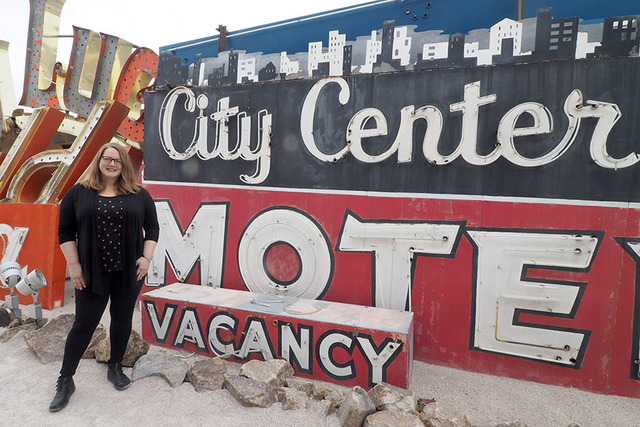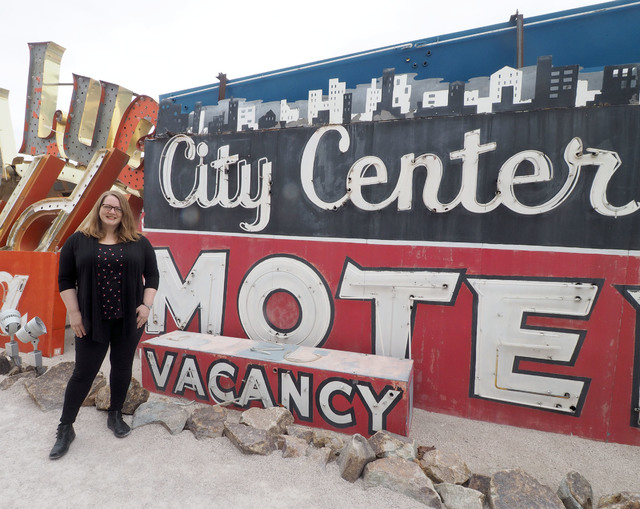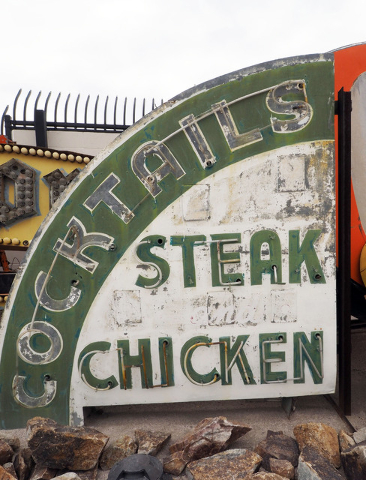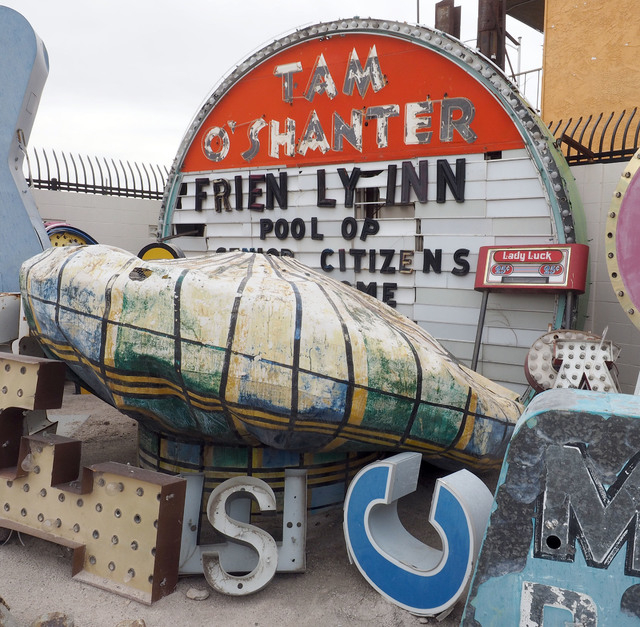What do women have to do with these signs?








Every Neon Museum sign tells a story.
This month, however, there’s a bit more to some of those stories.
Because March is Women’s History Month, the museum’s tours include content honoring the notable females behind some of the 150-plus signs on display in the Neon Boneyard.
Not that you’d necessarily associate the signs with the women behind them.
Take the little, white-bearded king who once reigned over Fremont Street’s Coin Castle.
Nothing notable there from a Women’s History Month perspective — unless you know that the Coin Castle occupied the same site as the Northern Club run by Mayme Stocker, which boasted the first gaming license — issued in her name — following Nevada’s 1931 re-legalization of gambling, which had been outlawed in 1901.
Mrs. Stocker’s husband and son worked for the railroad — the powerful Los Angeles, San Pedro and Salt Lake Railroad, built by the even more powerful Sen. William A. Clark, the Montana mining baron who was instrumental in the founding of Las Vegas. (And giving Clark County its name.)
The Northern Club opened in 1920 as “a soft-drink emporium” that sold Prohibition-era cocktails, according to Maggie Zakri, the museum’s collections manager. The word “Northern” in the club’s name “was kind of a password, a clue there would be some drinks — and maybe some gambling.”
Mayme Stocker’s hardly the only notable woman whose name pops up among the Women’s History Month honor roll, however.
The Golden Nugget sign, emblazoned with “1905” — the year Las Vegas was founded — recalls Helen J. Stewart, who sold her ranch to the aforementioned Clark in 1902.
Not only was that sale “extraordinarily important to the development of Las Vegas,” Zakri notes, but Stewart also made history as the “first woman postmaster, the first woman on a jury, the first woman on the school board.”
There’s also a notable woman linked to the museum’s oldest exhibit: the green, 1930s-era restaurant sign touting COCKTAILS STEAK CHICKEN at the Green Shack, a restaurant run by Mattie “Jimmie” Jones.
Jones lived on East Fremont Street “where it turns into Boulder Highway,” Zakri says — a perfect location to observe Hoover Dam workers escaping the company-town confines of Boulder City to party in Las Vegas. (The more things change … )
The enterprising Jones started selling fried chicken — and bootleg whiskey — from her home. That is, until she started the restaurant, which she housed in “a green railroad barracks building” that inspired the Green Shack’s name, Zakri notes. (It remained in business until 1999.)
Another stop on the Women’s History Month tour: the Binions Horseshoe sign. Many undoubtedly associate the Glitter Gulch relic with founder Benny Binion. But when Benny went to jail for tax evasion in the 1950s, Zakri points out, wife Teddy Jane Binion “ran the casino cage until she died in 1994.” (The Binion family sold the hotel-casino in 2004.)
The aforementioned women played roles in Las Vegas’ civic and/or business picture.
But there’s one Neon Museum sign notable with a direct connection to some of the signs on display: sign designer Betty Willis, who died in April 2015.
The creator of the iconic “Welcome to Fabulous Las Vegas” sign south of the Strip, Willis is represented at the Neon Museum by signs large and small.
Toward the start of the museum tour, there’s the gracefully flowing script of Willis’ Moulin Rouge marquee, done in “a Parisian scripted font” that’s “meant to evoke a class, elegant feel,” Zakri says of the sign advertising Las Vegas’ first integrated casino.
“That’s why it’s so beautiful ,” she says, “because it’s so simple.”
And so tall — Moulin’s “M” is 14 feet high, while the “R” in Rouge tops out at 23 feet.
In the museum’s “Motel Row” section, Willis’ more modest, but no less imaginative, City Center Motel sign reveals two Willis trademarks: the arrow-shaped title sign and cutouts depicting a stylized urban skyline.
This is the second year the Neon Museum has presented special Women’s History Month content; the museum includes similar supplemental information in February for Black History Month and for a summer Pride tour geared toward gay, lesbian and transgender history.
Historian Dorothy Wright — a longtime Neon Museum advocate who died in January — “developed the content” and “the docents get to choose” which tidbits to share with visitors, Zakri explains. “They don’t have a script; that’s why every tour is different.”
Read more stories from Carol Cling at reviewjournal.com. Contact her at ccling@reviewjournal.com and follow @CarolSCling on Twitter.
Preview
What: Women’s History Month at the Neon Museum
When: Daily tours offered at various times from 10 a.m. to 8:30 p.m.
Where: 770 Las Vegas Blvd. North
Tickets: $12-$25 (702-387-6366, www.NeonMuseum.org)


















